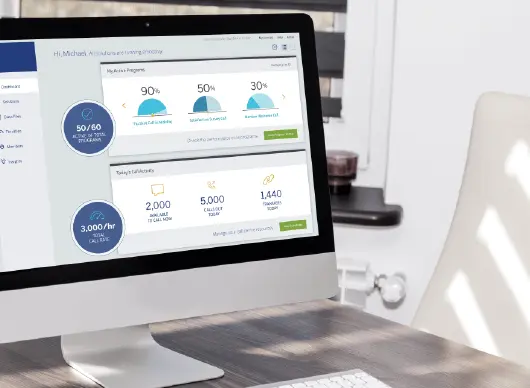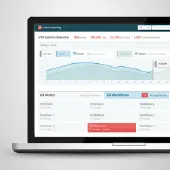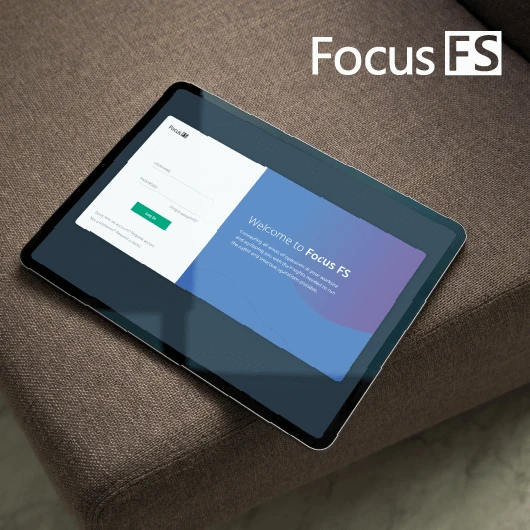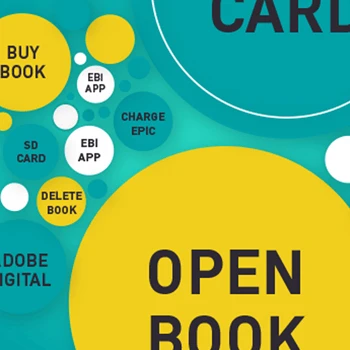What exactly is digital UX design and why is it critical for my business?
Digital UX design creates intuitive, engaging, and easy-to-use experiences for digital products that fulfill their promise to users. It encompasses interaction design, visual design, information architecture, and user research to ensure users find experiences effective, seamless, and enjoyable. Digital UX design drives competitive advantage by creating products that users prefer over alternatives, leading to increased engagement, retention, and business success.
Tip: Focus on business outcomes when evaluating digital UX design - measure success through user engagement, conversion rates, and customer satisfaction rather than just aesthetic appeal.
How does digital UX design differ from traditional web design?
Digital UX design takes a holistic, user-centered approach that prioritizes user needs, behaviors, and goals over aesthetic considerations alone. While traditional web design focuses primarily on visual elements, digital UX design integrates user research, interaction design, information architecture, and usability testing. It considers the entire user journey, multiple touchpoints, and how digital experiences connect with broader service ecosystems. The process is iterative, data-driven, and focused on solving real user problems.
Tip: Look for design partners who can demonstrate their user research process and show how insights translate into design decisions - this distinguishes UX design from purely visual design services.
What role does Experience Thinking play in digital UX design?
Experience Thinking provides the strategic framework for digital UX design by ensuring digital products connect seamlessly with brand, content, and service experiences. It recognizes that digital experiences don't exist in isolation but are part of connected user journeys. This approach balances design aesthetics with technology capabilities, ensuring digital products meet both user needs and business objectives. Experience Thinking guides the design process from concept through implementation, creating remarkable experiences that drive user advocacy.
Tip: Evaluate digital UX design services based on their ability to connect your digital product to your broader experience ecosystem - isolated product design often fails to create lasting user engagement.
How do you balance user needs with business requirements in digital UX design?
Effective digital UX design balances user needs with business requirements through strategic experience design that serves both audiences simultaneously. The process starts with understanding business objectives and user goals, then identifies solutions that advance both. User research informs design decisions while business constraints guide feasibility. The key is finding creative solutions that meet user needs while supporting business success, often through innovative approaches that competitors haven't considered.
Tip: Insist on seeing how design decisions connect to both user research insights and business metrics - the best digital UX design creates win-win solutions rather than compromises.
What makes digital UX design successful in competitive markets?
Successful digital UX design in competitive markets focuses on creating meaningful differentiation through superior user experiences rather than feature parity. It identifies unmet user needs, eliminates friction points that competitors haven't addressed, and creates emotional connections that drive loyalty. The design process emphasizes continuous iteration based on user feedback and market response. Success comes from understanding users more deeply than competitors and translating those insights into experiences that feel effortless and delightful.
Tip: Focus on digital UX design that creates sustainable competitive advantages through user experience rather than features that can be easily copied by competitors.
How does digital UX design support customer acquisition and retention?
Digital UX design supports customer acquisition by creating first impressions that immediately communicate value and guide users toward conversion. For retention, it ensures ongoing experiences that meet user expectations and adapt to evolving needs. The design process identifies critical user journey moments that influence acquisition and retention decisions. Well-designed digital experiences reduce support costs, increase user engagement, and create positive word-of-mouth that drives organic growth.
Tip: Track digital UX design impact through customer lifecycle metrics like time-to-value, feature adoption rates, and customer lifetime value rather than just conversion rates.
What's the relationship between digital UX design and brand experience?
Digital UX design serves as a primary brand touchpoint where users form impressions about your organization's values, capabilities, and personality. Every interaction design decision communicates brand attributes, from the tone of microcopy to the sophistication of visual design. Digital experiences must authentically reflect brand promises while meeting functional user needs. The design process ensures brand consistency across all digital touchpoints while allowing for platform-appropriate expression.
Tip: Ensure your digital UX design team understands your brand strategy and can articulate how design decisions support brand positioning and user perceptions.
What does the digital UX design process typically involve?
The digital UX design process follows a structured approach: user research to understand needs and behaviors, information architecture to organize content logically, interaction design to create intuitive workflows, visual design to enhance aesthetics and brand alignment, and usability testing to validate designs. The process is iterative, with multiple rounds of design, testing, and refinement. Each phase builds on previous insights while allowing for course corrections based on user feedback and business learning.
Tip: Look for design processes that include dedicated time for user research and testing - these phases are often underestimated but critical for successful outcomes.
How long does a typical digital UX design project take?
Digital UX design projects typically range from 8-20 weeks depending on complexity and scope. Simple product redesigns may take 8-12 weeks, while complex multi-platform experiences require 16-20 weeks or more. The timeline includes user research (2-3 weeks), design strategy and architecture (2-3 weeks), interaction design (4-6 weeks), visual design (3-4 weeks), and testing and refinement (2-3 weeks). Projects requiring extensive user research or multiple design iterations may need additional time.
Tip: Plan for design iteration time in your project schedule - rushing the design process often leads to poor user experiences and expensive revisions later.
What user research methods are most effective for digital UX design?
Effective digital UX design research combines multiple methods: user interviews to understand motivations and pain points, usability testing to identify interaction issues, analytics analysis to reveal usage patterns, and ethnographic observation to understand real-world contexts. Card sorting helps organize information architecture, while journey mapping reveals cross-touchpoint experiences. The choice of methods depends on project goals, timeline, and user accessibility. Mixed methods provide more reliable insights than single approaches.
Tip: Insist on seeing raw user research data and insights, not just summary findings - this helps you understand the depth and quality of research informing design decisions.
How do you ensure digital UX designs work across different devices and platforms?
Responsive digital UX design starts with understanding user contexts and device usage patterns across your target audience. The design process creates flexible systems that adapt to different screen sizes, input methods, and technical capabilities while maintaining core functionality and brand consistency. This involves designing for touch and cursor interactions, optimizing for various connection speeds, and ensuring accessibility across platforms. Testing on real devices validates design effectiveness across the ecosystem.
Tip: Request device testing reports that show how designs perform across your users' actual device landscape rather than just popular device categories.
What's the role of prototyping in digital UX design?
Prototyping in digital UX design serves multiple purposes: validating interaction concepts, testing user flows, communicating design intent to stakeholders, and identifying technical constraints before development. Prototypes range from low-fidelity wireframes to high-fidelity interactive mockups, with fidelity increasing throughout the design process. Early prototypes focus on concept validation, while later prototypes test detailed interactions and visual design. Prototyping enables rapid iteration and reduces development risk.
Tip: Evaluate prototypes based on their ability to test specific design assumptions rather than their visual polish - different project phases require different prototyping approaches.
How do you validate digital UX designs before implementation?
Design validation combines user testing, stakeholder review, and technical feasibility assessment. User testing reveals usability issues and validates design effectiveness, while stakeholder review ensures business alignment and brand consistency. Technical review identifies implementation challenges and optimizes designs for development. The validation process uses both qualitative feedback and quantitative metrics to assess design success. Multiple validation rounds allow for iterative refinement before final implementation.
Tip: Require validation testing with real users performing actual tasks rather than just collecting opinions about design concepts - task-based testing reveals real usability issues.
What deliverables should I expect from a digital UX design project?
Digital UX design deliverables typically include user research reports, design strategy documents, information architecture diagrams, interaction wireframes, visual design systems, style guides, and interactive prototypes. Additional deliverables may include user personas, journey maps, usability testing reports, and design specifications for development teams. The specific deliverables depend on project scope and organizational needs. All deliverables should include rationale connecting design decisions to user research and business objectives.
Tip: Clarify deliverable ownership and usage rights upfront - ensure you receive source files and documentation needed for ongoing design maintenance and evolution.
How do you ensure digital UX designs are technically feasible?
Technical feasibility assessment involves close collaboration between UX designers and development teams throughout the design process. Early technical review identifies platform constraints, performance requirements, and integration challenges. The design process balances user experience goals with technical realities, finding creative solutions that optimize both. Regular technical consultation prevents designs that are beautiful but impossible to implement effectively. The goal is creating designs that are both user-friendly and technically sound.
Tip: Include technical stakeholders in design reviews from the beginning rather than at the end - early technical input prevents costly redesigns and ensures optimal implementation.
What's the relationship between digital UX design and front-end development?
Digital UX design and front-end development work together to bring user experiences to life through code. UX design provides the interaction patterns, visual specifications, and user behavior requirements that guide development. Front-end development translates designs into functional experiences while maintaining design intent. Close collaboration ensures designs remain user-centered during implementation. The handoff process includes detailed specifications, style guides, and ongoing design support during development.
Tip: Look for design teams that can provide development-ready specifications and maintain design quality during implementation rather than just delivering static mockups.
How do you optimize digital UX designs for performance and accessibility?
Performance optimization in digital UX design involves designing for fast loading times, efficient interactions, and smooth animations while maintaining visual appeal. Accessibility considerations include color contrast, keyboard navigation, screen reader compatibility, and inclusive design patterns. The design process incorporates performance budgets and accessibility standards from the beginning rather than as afterthoughts. Testing includes performance measurement and accessibility audits to ensure designs work for all users.
Tip: Request performance metrics and accessibility compliance reports as part of design deliverables - these factors significantly impact real-world user experience.
What role does data and analytics play in digital UX design decisions?
Data and analytics inform digital UX design decisions by revealing user behavior patterns, identifying pain points, and measuring design effectiveness. Analytics data shows where users struggle, which features they use most, and how design changes impact key metrics. The design process combines quantitative data with qualitative user research to create a complete understanding of user needs. Ongoing analytics monitoring helps optimize designs based on real usage patterns rather than assumptions.
Tip: Ensure your design team can interpret analytics data and explain how data insights translate into specific design decisions rather than just collecting metrics.
How do you handle design systems and consistency across digital products?
Design systems provide the foundation for consistent digital experiences across multiple products and platforms. They include reusable components, interaction patterns, visual standards, and usage guidelines that ensure coherent user experiences. The design process creates scalable systems that accommodate growth while maintaining consistency. Design systems reduce development time, improve user familiarity, and enable faster iteration while ensuring brand and experience consistency.
Tip: Invest in design systems early if you have multiple digital products - the upfront investment pays dividends in consistency, efficiency, and user experience quality.
What's the importance of mobile-first design in digital UX?
Mobile-first design ensures digital experiences work effectively on the devices most users rely on daily. The approach starts with designing for mobile constraints, then progressively enhances for larger screens. This process forces prioritization of essential features and content while ensuring touch-friendly interactions. Mobile-first design addresses real user contexts where attention is limited and interactions must be efficient. The result is streamlined experiences that work well across all device types.
Tip: Test mobile designs on actual devices rather than just desktop simulators - real device testing reveals performance and usability issues that simulations miss.
How do you integrate AI and emerging technologies into digital UX design?
AI integration in digital UX design focuses on enhancing user experiences through intelligent personalization, predictive interactions, and automated assistance. The design process identifies opportunities where AI can reduce user effort, provide relevant content, or anticipate needs. However, AI implementation must remain transparent and user-controlled, avoiding the 'black box' problem. Emerging technologies are evaluated based on their ability to solve real user problems rather than their novelty factor.
Tip: Approach AI integration by identifying specific user problems that AI can solve rather than adding AI features for their own sake - user value should drive technology adoption.
How do you measure the ROI of digital UX design investments?
ROI measurement for digital UX design combines quantitative metrics like conversion rates, user engagement, and customer lifetime value with qualitative indicators like user satisfaction and brand perception. The measurement process establishes baseline metrics before design changes, then tracks improvements over time. Key indicators include task completion rates, error reduction, support ticket decreases, and user retention improvements. Long-term ROI includes competitive advantage, market differentiation, and customer advocacy value.
Tip: Establish clear success metrics before starting design work and track both immediate performance indicators and longer-term business outcomes to demonstrate comprehensive value.
What business problems does digital UX design solve most effectively?
Digital UX design most effectively solves problems related to user adoption, engagement, retention, and conversion optimization. It addresses issues like high abandonment rates, low feature utilization, customer support burdens, and competitive disadvantage. The design process identifies root causes of user experience problems and creates solutions that improve both user satisfaction and business performance. Most effective applications involve complex user workflows, multi-step processes, and products with significant learning curves.
Tip: Focus digital UX design efforts on your biggest user experience pain points rather than trying to improve everything at once - concentrated effort on critical issues delivers better ROI.
How does digital UX design support digital transformation initiatives?
Digital UX design supports digital transformation by ensuring new digital capabilities actually improve user experiences rather than just digitizing existing processes. The design process reimagines user workflows for digital contexts, eliminates unnecessary steps, and creates new value propositions. However, successful digital transformation recognizes that digital experiences connect to non-digital touchpoints and must work within broader service ecosystems. The focus is on business transformation enabled by digital rather than technology for its own sake.
Tip: Frame digital transformation as service transformation that happens to use digital tools rather than just technology implementation - this keeps user value and business outcomes central.
What's the role of competitive analysis in digital UX design strategy?
Competitive analysis in digital UX design reveals market opportunities, user expectation baselines, and differentiation possibilities. The analysis examines competitor strengths and weaknesses, identifies unmet user needs, and reveals design patterns that users expect. However, the goal is not to copy competitors but to understand the competitive landscape and find opportunities for superior user experiences. The analysis also helps set realistic user expectations and identify innovation opportunities.
Tip: Use competitive analysis to identify gaps in competitor experiences rather than just cataloging their features - focus on opportunities to serve users better than existing alternatives.
How do you prioritize digital UX design improvements?
Prioritization balances user impact, business value, and implementation complexity to identify improvements with the highest return on investment. The process considers factors like user pain severity, business metric impact, development effort, and strategic importance. User research identifies the most critical experience problems, while business analysis determines which improvements support key objectives. The prioritization framework weights these factors according to organizational priorities and resource constraints.
Tip: Create a prioritization matrix that considers both user impact and business value rather than just focusing on one dimension - the best improvements serve both audiences simultaneously.
What organizational capabilities are needed for successful digital UX design?
Successful digital UX design requires capabilities in user research, interaction design, visual design, and usability testing. Organizations need people who can understand user needs, translate insights into design solutions, and validate designs with real users. Additional capabilities include project management, stakeholder communication, and design system maintenance. Most importantly, organizations need leadership support for user-centered design processes and willingness to iterate based on user feedback.
Tip: Assess your organization's design maturity and capability gaps before starting major digital UX design initiatives - capability development may be as important as the design work itself.
How do you scale digital UX design across multiple products or teams?
Scaling digital UX design requires standardized processes, shared design systems, and coordinated governance structures. The approach includes creating reusable design components, establishing consistent research and design methodologies, and building internal design capabilities. Scaling also involves change management to help teams adopt user-centered design practices. The goal is maintaining design quality and consistency while enabling efficient execution across multiple initiatives.
Tip: Invest in design system development and team training early in the scaling process - these foundations enable consistent, efficient design execution across multiple products and teams.
How do you approach digital UX design for complex enterprise applications?
Enterprise digital UX design addresses unique challenges like complex workflows, diverse user roles, integration requirements, and high-stakes decision making. The design process emphasizes task efficiency, error prevention, and information density while maintaining usability. Enterprise designs must accommodate expert users who value power and efficiency over simplicity. The approach includes extensive user research with actual enterprise users, workflow analysis, and iterative testing in real business contexts.
Tip: Spend significant time understanding enterprise user contexts and workflows before designing - enterprise users have different priorities and constraints than consumer users.
What's unique about digital UX design for e-commerce platforms?
E-commerce digital UX design focuses on conversion optimization, trust building, and reducing purchase friction while creating engaging shopping experiences. The design process emphasizes product discovery, comparison functionality, and checkout optimization. Key considerations include product information presentation, search and filtering capabilities, payment security, and mobile shopping optimization. The approach balances business conversion goals with user shopping preferences and behaviors.
Tip: Test e-commerce designs with real purchasing scenarios rather than just browsing tasks - the purchase decision context reveals different usability issues than casual browsing.
How do you design digital UX for mobile-first or mobile-only experiences?
Mobile-first digital UX design prioritizes touch interactions, limited screen space, and contextual usage patterns. The design process emphasizes gesture-based navigation, thumb-friendly interface layouts, and progressive disclosure of information. Mobile designs must account for various usage contexts, from focused task completion to casual browsing. The approach includes extensive mobile device testing, performance optimization, and accessibility considerations for smaller screens.
Tip: Design mobile experiences for one-handed use and varying attention levels - mobile users often multitask or use apps in distracting environments.
What considerations are important for digital UX design in regulated industries?
Regulated industry digital UX design must balance user experience goals with compliance requirements, security protocols, and audit trails. The design process incorporates regulatory constraints from the beginning rather than as afterthoughts. Key considerations include data privacy, accessibility compliance, security protocols, and documentation requirements. The approach involves close collaboration with compliance teams and extensive testing to ensure designs meet both user needs and regulatory standards.
Tip: Involve compliance and legal teams early in the design process to identify requirements that could impact user experience rather than discovering constraints late in development.
How do you approach digital UX design for international or multicultural audiences?
International digital UX design considers cultural differences, language requirements, and local user preferences while maintaining core functionality. The design process includes cultural research, localization planning, and testing with representative users from target markets. Key considerations include text expansion, reading patterns, color meanings, and interaction preferences. The approach balances global consistency with local relevance to create experiences that feel native to each market.
Tip: Conduct user research in target markets rather than just translating existing designs - cultural differences in user behavior and preferences can significantly impact design effectiveness.
What's the approach to digital UX design for emerging platforms and technologies?
Emerging platform digital UX design requires experimentation, rapid prototyping, and willingness to establish new design patterns. The approach emphasizes understanding platform capabilities and constraints while creating intuitive experiences that leverage unique platform features. Key considerations include new interaction paradigms, technical limitations, and user learning curves. The design process involves extensive prototyping and testing to discover effective patterns for new platforms.
Tip: Focus on solving real user problems with emerging technologies rather than showcasing platform capabilities - successful emerging platform designs address genuine user needs rather than just demonstrating technical possibilities.
How do you integrate AI capabilities into digital UX design effectively?
AI integration in digital UX design focuses on enhancing user capabilities rather than replacing human judgment. The design process identifies tasks where AI can reduce cognitive load, automate routine decisions, or provide intelligent recommendations. Key considerations include AI transparency, user control, error handling, and fallback options. The approach emphasizes AI as a tool that empowers users rather than a black box that makes decisions for them. Design patterns must help users understand AI capabilities and limitations.
Tip: Design AI features to be transparent and controllable - users should understand what AI is doing and retain the ability to override AI decisions when necessary.
How do you ensure digital UX designs meet accessibility standards?
Accessibility in digital UX design involves designing for users with diverse abilities, including visual, auditory, motor, and cognitive differences. The design process incorporates accessibility guidelines from the beginning, including color contrast requirements, keyboard navigation, screen reader compatibility, and alternative text for images. Testing includes automated accessibility audits and validation with assistive technology users. The approach treats accessibility as a core design requirement rather than an add-on feature.
Tip: Include users with disabilities in your testing process rather than relying only on automated accessibility tools - real user feedback reveals issues that automated testing might miss.
What quality assurance processes ensure digital UX design effectiveness?
Quality assurance in digital UX design includes multiple validation layers: user research validation, design review processes, usability testing, technical feasibility assessment, and post-launch monitoring. The QA process ensures designs meet user needs, business requirements, and technical constraints. Regular design reviews catch issues early, while usability testing validates design effectiveness with real users. Post-launch monitoring tracks design performance and identifies improvement opportunities.
Tip: Establish quality checkpoints throughout the design process rather than just at the end - early quality assurance prevents costly revisions and ensures consistent design standards.
How do you validate digital UX designs with real users before launch?
User validation involves multiple testing methods: task-based usability testing, A/B testing of design alternatives, prototype testing with target users, and pilot launches with limited audiences. The validation process uses both qualitative feedback and quantitative metrics to assess design effectiveness. Testing scenarios reflect real user contexts and goals rather than artificial laboratory conditions. The approach includes multiple testing rounds to refine designs based on user feedback.
Tip: Test designs with users performing realistic tasks in natural environments rather than just collecting opinions about design concepts - task-based testing reveals actual usability issues.
What metrics and KPIs best measure digital UX design success?
Digital UX design success metrics include both user experience indicators and business performance measures. User experience metrics cover task completion rates, error rates, time on task, and user satisfaction scores. Business metrics include conversion rates, user retention, engagement levels, and support ticket volume. The measurement framework balances leading indicators like user satisfaction with lagging indicators like business results. Ongoing monitoring tracks design performance over time.
Tip: Define success metrics before starting design work and track both immediate usability improvements and longer-term business impact to demonstrate comprehensive value.
How do you handle design iteration and continuous improvement?
Design iteration involves systematic refinement based on user feedback, usage data, and business learning. The process includes regular design reviews, user testing cycles, and performance monitoring to identify improvement opportunities. Iteration priorities balance user needs, business objectives, and technical constraints. The approach treats design as an ongoing process rather than a one-time project, with continuous optimization based on real-world usage patterns.
Tip: Plan for ongoing design iteration in your project budget and timeline rather than treating design as a one-time deliverable - the best digital experiences evolve based on user feedback and usage data.
What's the role of design documentation in maintaining quality?
Design documentation preserves design intent, facilitates team communication, and ensures consistent implementation across development cycles. Documentation includes design rationale, user research insights, interaction specifications, and style guides. The documentation process captures not just what was designed but why design decisions were made. This knowledge helps future team members understand design systems and make consistent decisions during updates and iterations.
Tip: Invest in creating and maintaining design documentation that explains design decisions and rationale rather than just documenting final designs - this knowledge is crucial for long-term design success.
How do you ensure design handoff quality to development teams?
Design handoff quality involves clear communication, detailed specifications, and ongoing collaboration between design and development teams. The handoff process includes interactive prototypes, design specifications, asset delivery, and implementation guidelines. Regular review sessions ensure designs are implemented according to intent. The approach treats handoff as an ongoing collaboration rather than a one-time transfer, with designers remaining involved during implementation to maintain design quality.
Tip: Include designers in development reviews and testing cycles to ensure design intent is maintained during implementation rather than just handing off static designs.
How are emerging technologies shaping the future of digital UX design?
Emerging technologies like AI, voice interfaces, augmented reality, and conversational interfaces are expanding the possibilities for digital UX design beyond traditional screens. The design process must consider new interaction paradigms, from voice commands to gesture controls to contextual AI assistance. However, successful integration focuses on solving real user problems rather than showcasing technology capabilities. The approach emphasizes human-centered design principles while exploring new ways to create value for users.
Tip: Evaluate emerging technologies based on their ability to improve user experiences rather than their novelty factor - successful adoption depends on solving genuine user needs.
What's the impact of AI on digital UX design processes and outcomes?
AI is transforming digital UX design through automated design generation, intelligent personalization, and enhanced user research capabilities. AI tools can generate design variations, analyze user behavior patterns, and provide personalized experiences at scale. However, AI augments rather than replaces human design judgment and creativity. The design process must balance AI efficiency with human insight and creativity. Successful AI integration maintains human oversight and ensures user control over AI-powered features.
Tip: Use AI to enhance human design capabilities rather than replace human judgment - the best AI-assisted designs combine technological efficiency with human creativity and empathy.
How do you design for an increasingly mobile and multi-device world?
Multi-device digital UX design recognizes that users seamlessly move between devices and expect consistent experiences across all touchpoints. The design process emphasizes continuity, synchronization, and context-awareness across device types. Key considerations include responsive design, cross-device functionality, and adaptive interfaces that optimize for each device's strengths. The approach treats multi-device usage as a single, connected experience rather than separate device-specific designs.
Tip: Design for cross-device user journeys rather than individual device experiences - users expect to start tasks on one device and complete them on another seamlessly.
What role does sustainability play in digital UX design?
Sustainable digital UX design considers environmental impact through energy-efficient design patterns, reduced data consumption, and longer product lifecycles. The design process optimizes for performance, reduces unnecessary features, and creates durable experiences that don't require frequent redesigns. Sustainable design also considers social impact, including accessibility, inclusivity, and digital divide considerations. The approach balances user experience goals with environmental and social responsibility.
Tip: Consider the environmental impact of design decisions like image optimization, animation usage, and feature complexity - sustainable design often improves both user experience and environmental outcomes.
How do you prepare digital UX designs for future scalability and evolution?
Future-ready digital UX design creates flexible systems that can adapt to changing user needs, business requirements, and technological capabilities. The design process emphasizes modular components, scalable information architecture, and extensible design patterns. Key considerations include design system development, API-first thinking, and component-based architectures. The approach balances current requirements with future flexibility, avoiding over-engineering while ensuring designs can evolve gracefully.
Tip: Invest in design systems and flexible architectures early in the design process - these foundations enable efficient scaling and evolution as requirements change.
What's the future of user research in digital UX design?
The future of user research in digital UX design includes real-time behavioral analytics, AI-powered insight generation, and continuous user feedback loops. Research methods are becoming more automated and integrated into design workflows, enabling faster iteration and validation. However, human insight and empathy remain central to understanding user needs and motivations. The evolution emphasizes combining quantitative behavioral data with qualitative understanding to create more effective designs.
Tip: Embrace new research technologies while maintaining focus on human understanding - the best future research combines automated data collection with human insight and empathy.
How do you stay current with rapidly evolving digital UX design trends and practices?
Staying current in digital UX design requires continuous learning, experimentation, and community engagement. The approach includes following design thought leaders, participating in design communities, attending conferences, and conducting design experiments. However, successful trend adoption focuses on user value rather than aesthetic novelty. The process involves evaluating new practices against established design principles and user needs rather than adopting trends unconditionally.
Tip: Filter design trends through user research and business objectives rather than adopting them for aesthetic reasons - successful trend adoption improves user experiences and business outcomes.












